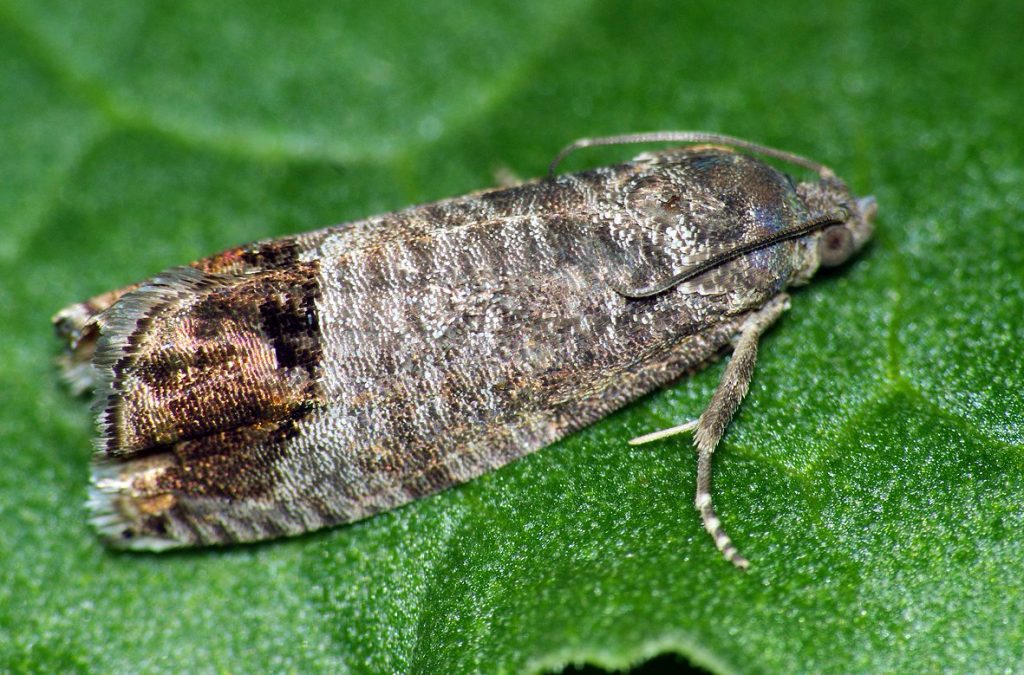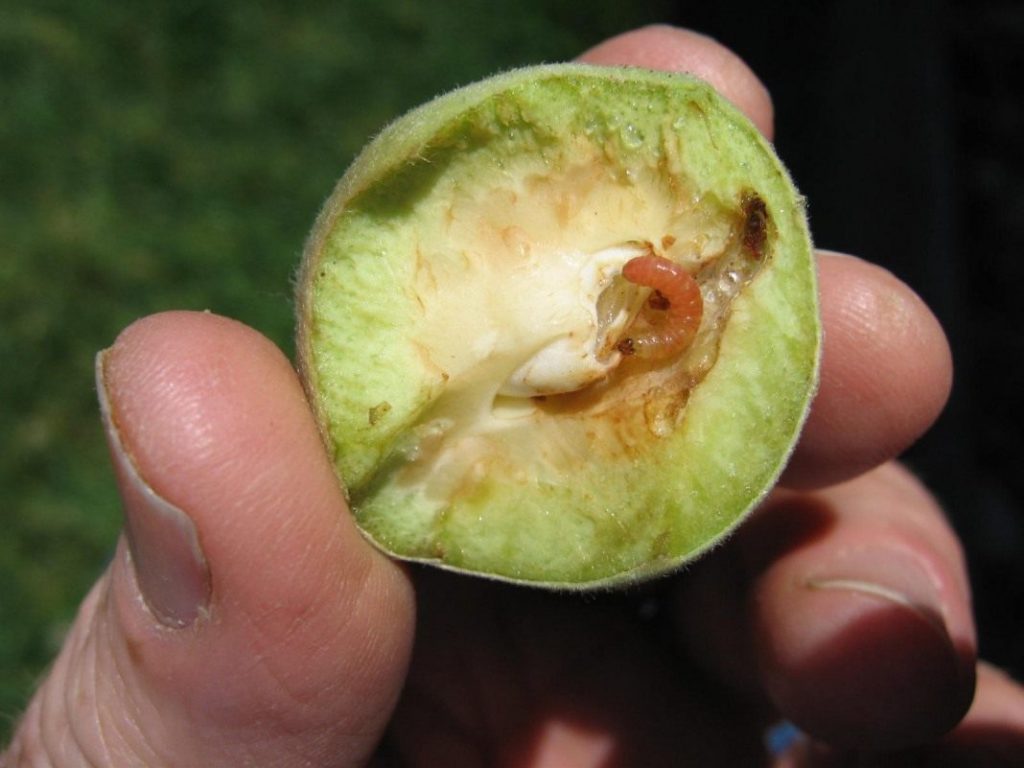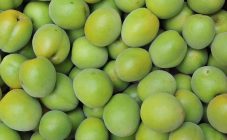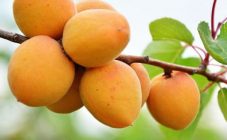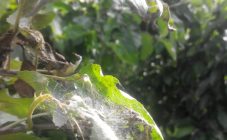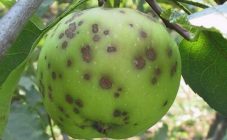Content:
When plants weaken for one reason or another, pests can attack them. Having taken a liking to the fruit tree that gives them food, they multiply and spread. So, the plum moth loves the fruits of the plum. It can spoil the harvest, reducing its quality and quantity. This insect (butterfly) is one of the main pests of fruit-bearing trees. Its habitat is registered everywhere. She especially finds herself in the south of the Russian Federation.
Why is the plum moth dangerous?
The gray butterfly with a brown tint is the plum moth. This is a nocturnal insect, common in the territory of the Russian Federation, in Siberia, and Europe. It's easy to spot. It leaves holes with brown dots around the fruit. The tracks of the tracks are visible inside. The bone is also damaged.
Butterflies are active at night, so they are not easy to see. The danger is a caterpillar eating fruit. It hatches for up to 10 days, and leads an active lifestyle for up to 45 days. The harm from the moth is damage to the vascular system of plums, pears, peaches, which deprives the fruit of the flow of nutrients. Plums turn purple, their growth slows down, they ripen prematurely and fall off. In young plums, the moth eats a bone, and in developing ones - the pulp. The passages are filled with her waste.
Description and biological features
In the more southern regions of the Russian Federation, the moth gives three generations during development. To the north there is only one. Butterflies live up to 15 days. They have no food. Their second generation has been flying since mid-June. The butterfly has a head - up to 1.7 cm, wings - with a span of 1.7 cm. The front ones are covered with spots and markings, and the back ones have a fluffy fringe. Larvae - caterpillars are characterized by a scarlet color. The insect lays light green eggs up to 0.7 mm in size. The 0.8 cm light brown pupa is colored the same as a butterfly.
Cycles
The plum moth and the control measures against it are associated with the cyclical periods of its life. The larvae stay overwintering, hiding from the cold under the bark. They wait out the season in the cracks of the tree, fallen leaves. The transformation of caterpillars into pupae occurs by mid-May. Butterflies form after 14 days. In the ovary of plums and other garden fruits, up to 40 eggs are laid in the evening. After a week, caterpillars appear, beginning to devour the flesh near the bone. The larvae are saturated and crawl away for the winter, hiding in the topsoil, under the bark.
The moth leaves traces: drops of gum, discoloration of the fruit. Plums fall from the tree. You need to start taking action as soon as possible. When you see a butterfly, you need to think about the consequences. After all, she will soon acquire offspring, which is not so easy to get rid of.
Methods of struggle, their comparison
The plum moth, the methods of dealing with which are carried out once a summer, may arise again, and more than once.
Processing should be done several times, taking into account the estimated egg-laying time:
- June 1-16. The repeated procedure is done 25 days or a month after the initial one (about June 10).
- The largest concentration of caterpillars is the second half of July (from the 18th to the 1st August). You need to process it twice per period.
A number of methods are used to combat voracious insects. They are used individually and in combination. This is a biological method and chemicals. The first is the safest for people and animals, environmentally friendly. But one should also take into account the need for mechanical methods in agricultural technology, which must be used in the spring and autumn. After harvesting, they dig up the trunk circle, and then the falling foliage. Shake the tree so that the affected fruits fall. In the spring, dead bark is removed and burned from the trees, since pupae usually hibernate under it, whitewashing is used as a means.
Biological compounds
After the application of bio-compounds, by the time the crop ripens, there are almost no harmful substances in the fruits.
The effectiveness of the impact is achieved by observing the terms that depend on the development cycle of the pest. Also, the amount of precipitation, dew, and the presence of other reagents are taken into account. These factors can reduce exposure, as biologicals can wash away moisture. Fitoverm and Iskra-Bio means are used. Plants should be treated in dry weather with no wind. The disadvantage is the fact that the preparation is washed off by rain, as a result of which the treatment must be repeated.
Chemicals
When spraying plants with chemistry, safety rules must be followed. Then the method can be considered the most effective in comparison with others. Processing is carried out quickly and does not require large labor costs. But the disadvantage is the accumulation of reagents in the fruit. With the wrong use of drugs, this amount of harmful substances doubles.
The following tools are used:
- Alatar.
- Decis.
- Fufanon.
- Karbofos.
- Spark Double effect.
- Other substances.
When to spray apples and plums from the moth? Insecticides are applied twice: at the end of flowering, when ovaries form, and in July, when the 2nd generation larvae are eliminated. The first period is different for the regions, on average it is set at the beginning of June. The 1st generation of caterpillars is destroyed. At the beginning of August, the remains are treated with biological agents. In this way, protection of fruit crops can be ensured. The last treatment is carried out more than a month before harvest.
When processing, you need to use protective equipment. Especially the respiratory system should be protected.
How to do without chemistry
Some gardeners decide to stop using chemistry. Is it possible? Prevention will help reduce the number of plum moths.
For this, the following measures are taken:
- Dead bark is cleaned from boles. After all, under it, she can stay for the winter.
- It is advisable to regularly incinerate trash at the site, including fallen and spoiled fruit on the ground.
- The larvae are caught with sticky strips of cardboard or burlap placed at the bottom of the trunk. Special glue is used that does not dry out. This procedure is done after flowering. The belt is changed as needed.
- Trichograms (microscopic insects) are used to fight. They are released when the moth eggs are laid, which are affected.
- The shoots affected by the pest are systematically cut off.
- Attract birds by making houses.
- During pupation, every decade, the soil near the tree is loosened, which prevents crawling.
- Pheromone traps are made with the smells of female moths. The males are captured. One such device is enough for 4 trees.
- They are sprayed with infusions of tansy, tomato or potato tops, chamomile, and burdock, processing them weekly. This is a folk method.
- Water with ash and soap is also a treatment agent.
All these methods are applied in turn. If they don't help, use chemistry.Knowing how to deal with a pest - a moth on a plum, apple or cherry tree, the gardener will be able to take action in advance and protect the crop.
